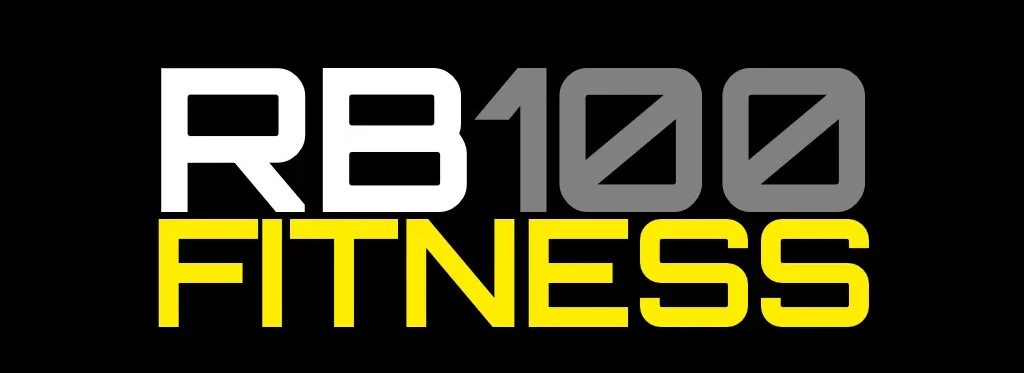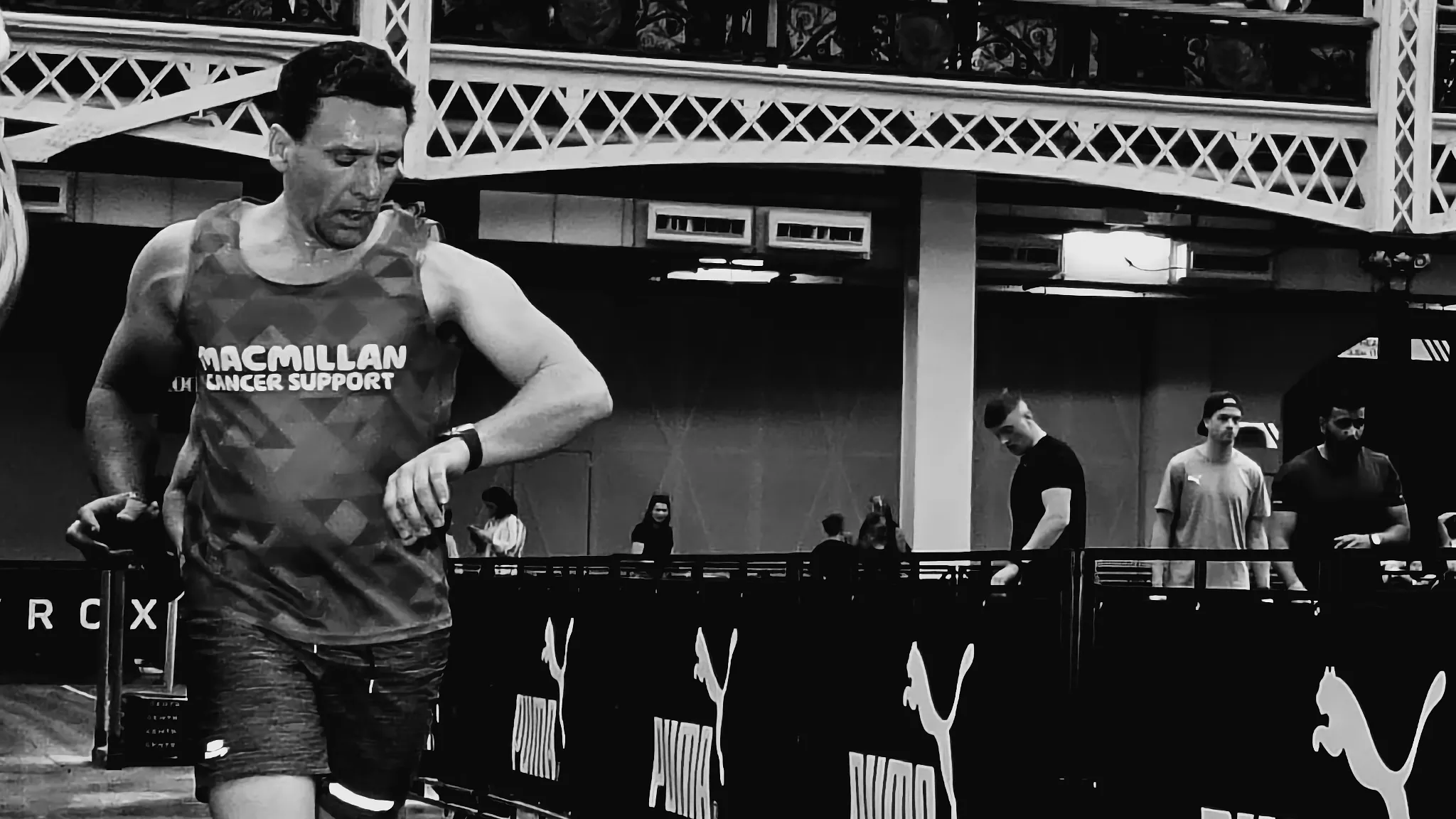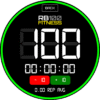Introduction: Pace Is a Skill
Every HYROX athlete knows the first kilometre feels easy and the last feels impossible.
That’s not a strength issue it’s a pacing problem.
Whether you rely on a heart-rate monitor, target splits, or instinctive effort, how you manage intensity across 60–90 minutes determines your result.
“You can’t win HYROX in the first run, but you can lose it there.”
— RB100.Fitness
The challenge: HYROX is hybrid. The constant switching between cardio and strength stations makes it hard to rely on one pacing metric alone. The best athletes combine heart rate, pace, and RPE (Rate of Perceived Exertion)intelligently.
1. Heart Rate: Precision, With Caveats
Heart-rate pacing helps you understand internal effort how hard your body is actually working.
It’s most useful for steady-state runs and recovery phases.
Pros:
- Great for aerobic pacing (Zone 2 or Zone 3)
- Keeps intensity controlled early
- Helps monitor recovery between stations
Cons:
- Lags behind effort (especially after sled work)
- Spikes unpredictably under fatigue or heat
- Limited accuracy in short transitions
Practical Use:
- Target Zone: 85–88% of max HR during runs
- Station Recovery: Let HR drop to ~75% before next station
- Avoid: Chasing HR targets mid-race — use it for trends, not real-time decisions
Linked reading: Zone 2 for HYROX: Aerobic Base That Doesn’t Steal Speed

2. Pace: External but Reliable
Pace gives clear external feedback how fast you’re moving, not how hard it feels.
However, HYROX isn’t a flat 8K run; fatigue and terrain (especially indoor flooring) make pacing variable.
Pros:
- Great for rhythm between stations
- Easy to benchmark using race simulations
- Tracks consistency across 8×1 km segments
Cons:
- Doesn’t reflect fatigue or strength output
- Can mislead if transitions are slow or spacing inconsistent
Practical Use:
- Base pace on threshold pace +10–15 sec/km
- Example: 10K pace = 4:30/km → HYROX pace ≈ 4:40–4:45/km
- Adjust ±5 sec per km depending on load of previous station
Linked reading: Threshold Training for HYROX: Field Tests and Weekly Progression
3. RPE (Rate of Perceived Exertion): The Race-Day Reality
RPE is subjective but it’s the only pacing tool that works when everything else fails.
When your watch fogs, your HR drifts, and fatigue hits, RPE tells you whether you can hold the line.
Pros:
- Always available, no tech required
- Adjusts automatically for fatigue, hydration, and terrain
- Trains intuition for future races
Cons:
- Requires experience to interpret accurately
- Can underestimate effort early in the race
RPE Benchmarks for HYROX:
| Phase | Effort (1–10) | Description |
|---|---|---|
| First 2 km | 6–7 | Controlled effort, sustainable breathing |
| Mid-race (km 3–6) | 7–8 | Challenging, rhythmic discomfort |
| Final 2 km | 8–9 | Deep fatigue, mental control zone |
Linked reading: HYROX Mindset: Training Your Mental Game for Hybrid Racing

4. How to Combine All Three
The best pacing isn’t one method it’s the interplay between them.
Race Flow Framework:
- Use Heart Rate for the first two runs → prevent early overexertion.
- Use Pace to stabilise rhythm through the mid-race segments.
- Use RPE in the final 2–3 km → heart rate becomes unreliable, perception rules.
This hybrid strategy teaches you to pace from the inside out reading both data and feel.
“Data guides your pacing experience perfects it.” — RB100.Fitness
5. Training Your Pacing System
Practice pacing awareness in training so it becomes instinctive on race day.
Session 1 — Controlled Intervals
5×1 km @ race pace
Track HR, split, and RPE each round
Goal: Keep all three within 3% consistency.
Session 2 — Brick Flow Session
800 m Run → Sled Push → 800 m Run → Row
Repeat ×3
Goal: Learn how heart rate spikes and pacing feels between modalities.
Linked reading: Brick Sessions for HYROX: Run-to-Station and Station-to-Run
Session 3 — Simulation Run
8×(1 km run + 1 station)
Goal: Record pacing drift and note when you start losing form or control.
For integrated training structure, see Weekly Engine Builder: The HYROX Cardio Template
6. Adjusting for Category and Experience
| Category | Pacing Focus | Advice |
|---|---|---|
| Open / First Race | HR & RPE | Use HR to stay conservative; focus on rhythm |
| Pro / Experienced | Pace & RPE | Use pace for structure, feel for late-race effort |
| Doubles / Team | RPE & Communication | Align perceived effort between partners |
“Every athlete hits the wall differently pacing is learning where yours begins.” — RB100.Fitness
Summary: Control Beats Chaos
Heart rate keeps you honest.
Pace keeps you structured.
RPE keeps you human.
The best HYROX pacing blends all three data, discipline, and feel so you stay composed from the first run to the final wall ball.
“Real pacing is awareness, not numbers.” — RB100.Fitness
About HYROX Season 2025/2026
- Standard format: 8 runs + 8 stations
- Race season: September 2025 – June 2026
- Consistent indoor race setup worldwide
Plan your events via the RB100 Fitness Racing Events Calendar or the Official Find my HYROX Race page












